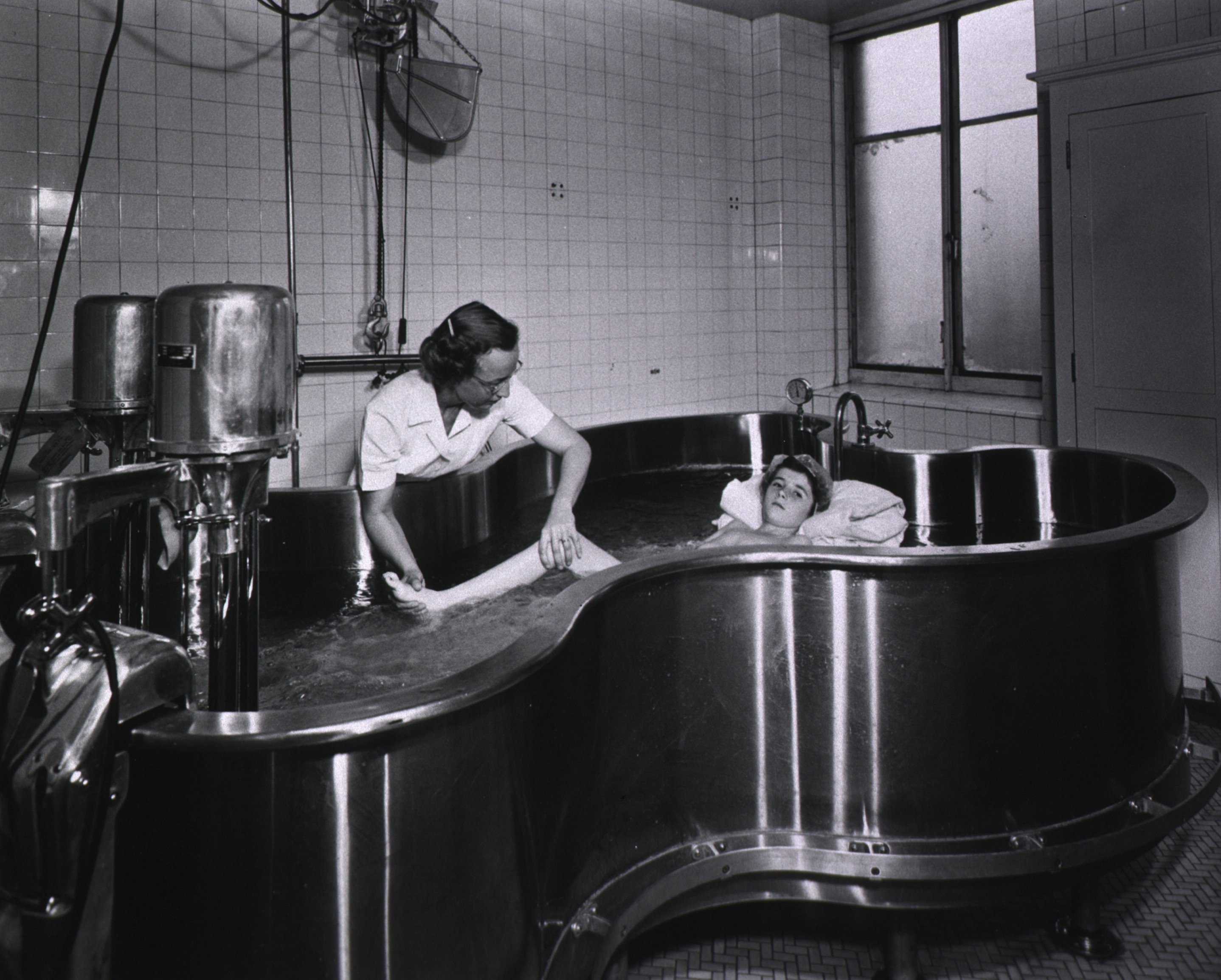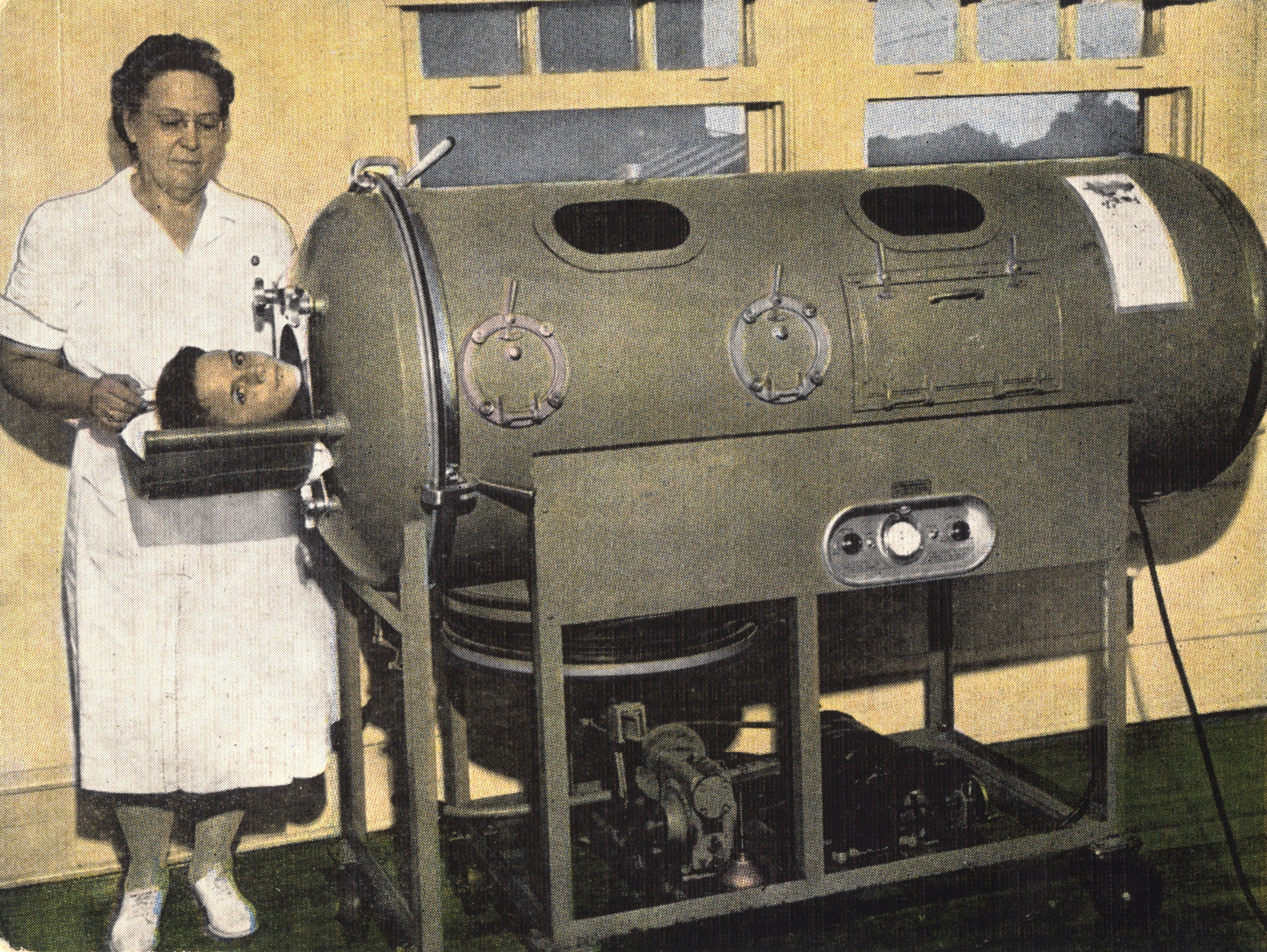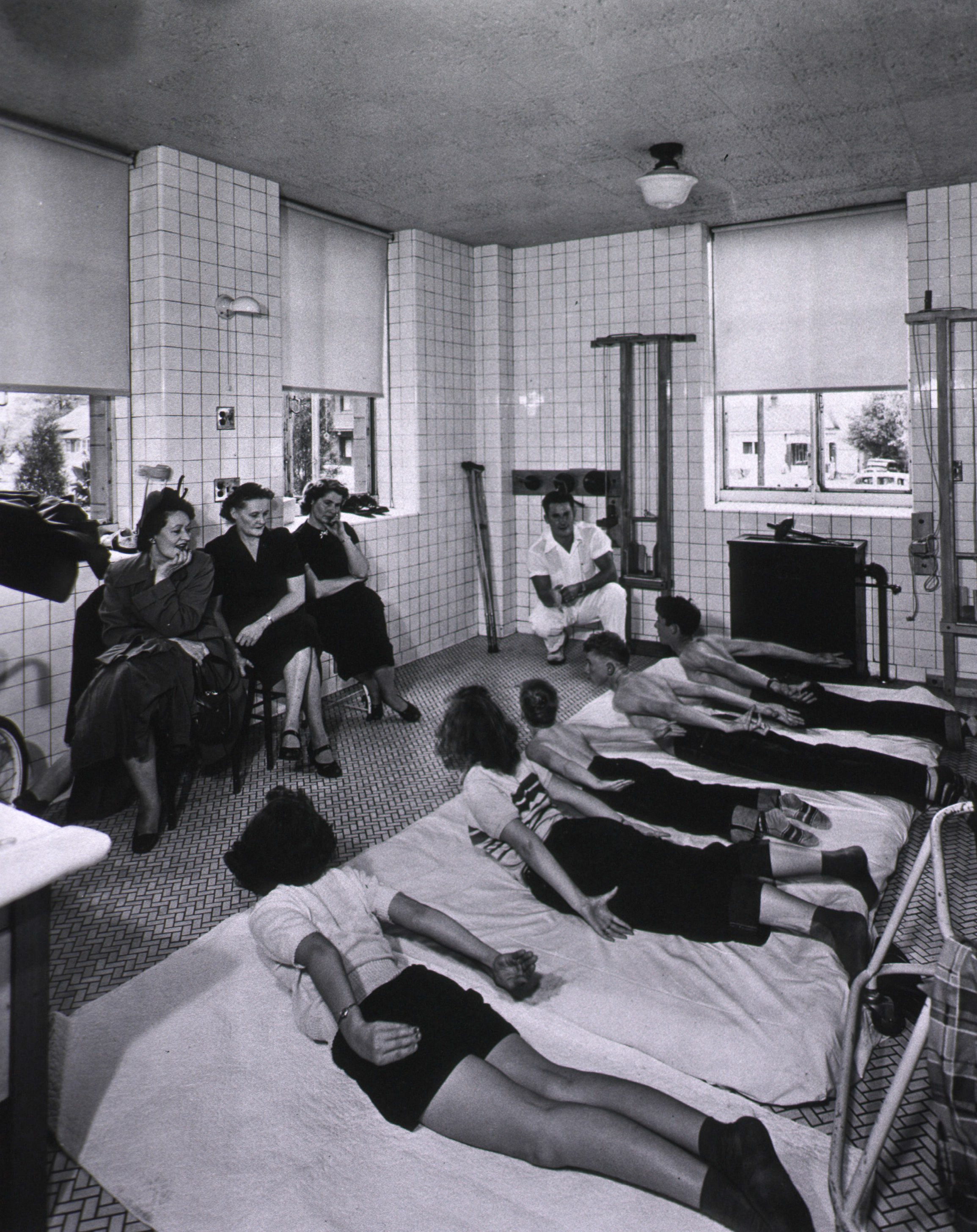Brief History of Polio
Few diseases scared parents in the early 20th century more than polio. It often struck in the warmer summer months, sweeping through cities and towns in epidemics every few years. Poliomyelitis (often just called polio now) is an acute paralytic disease. It’s an enterovirus, transmitted through contact with people, by nasal and oral secretions, and by contact with contaminated feces. Polio virus enters the body through the mouth, multiplying along the way and especially in the digestive tract.
Polio has existed since ancient times and was documented in the written record in the 18th and 19th centuries, causing paralysis and death. There are 3 wild types of polio virus (types 1-3), which are naturally-occurring and non-mutated strains.
Iron lungs were large metal tube-like boxes that provided breathing support for paralyzed polio patients (two photos below). The iron lung was first invented in 1929 by Dr. Phillip Drinker and Dr. Charles McKhann at Boston Children’s Hospital. Iron lungs were temporary, or sometimes permanent, solutions for polio patients whose paralysis affected their breathing.
Scientists from the FDA Office of Biologics Research and Review (OBRR), which is what the biologics regulation team was called in the 1980s, continued their long-standing involvement in poliomyelitis work in the early 1980s, investigating inactivated poliomyelitis vaccines that had been superseded by the live-attenuated vaccine in the U. S. since the early 1960s, though the former continued to be used widely in other countries. The Office collaborated with others in studies of the inactivated vaccines, which could offer advantages in both cost and dosing schedules and made use of more recent genetic technology in its assessment of the character of the vaccines. They also worked with the World Health Organization to develop international guidelines for testing live polio vaccine viruses.
Late in 1987, what was now called the FDA Center for Biologics Evaluation and Research (CBER) licensed a more potent inactivated poliomyelitis vaccine. Improvements in cell culture and purification facilitated this new, more effective vaccine requiring three vaccinations instead of four. This vaccine was preferred for unimmunized adults and for children with suppressed immune systems.
Although polio has no cure, as you will read in this timeline, vaccines have successfully eradicated polio in the western hemisphere since 1994.
A nurse and two U.S. Army corpsmen attend to a poliomyelitis patient in an iron lung in 1949. National Library of Medicine
A polio patient in a large whirlpool tub is receiving treatment with the aid of a physiotherapist in 1949. National Library of Medicine (Hal Rumel, Photographer)
An image from a circa-1942 advertising postcard for the Harry-Anna Crippled Children's Home, Umatilla, Florida, featuring a child in an iron lung being watched over by a nurse. National Library of Medicine ( Michael Zwerdling, former owner; Carl E. Wartman, publisher; E.C. Kropp Co., printer)
A nurse is ready to offer assistance to a young boy with polio struggling to walk with the aid of crutches and leg braces. Shigenori Kameyama was little more than a year old when the polio virus found him in the hamlet of Tskuni on Kyushe Island, some 1,800 kilometers from Tokyo, Japan. He became completely paralyzed. Several years later, Shigenori was admitted to the Seiahi Ryogo En, a hospital, school, and home for crippled children founded in 1937 by Dr. Kenji Takagi, pioneer of rehabilitation work in Japan. There Shigenori began the long battle to regain partial use of his limbs. After two years of patient endeavor by Shigenori and his nurses, he managed to hobble forward a distance of five feet. Photographer Dominique Darbois, World Health Organization (WHO) via National Library of Medicine
A physiotherapist giving directions to convalescent polio patients with mothers watching at the Dr. W.H. Groves Latter-Day Saints Hospital in Salt Lake City, UT in 1949. Intermountain Healthcare via National Library of Medicine







